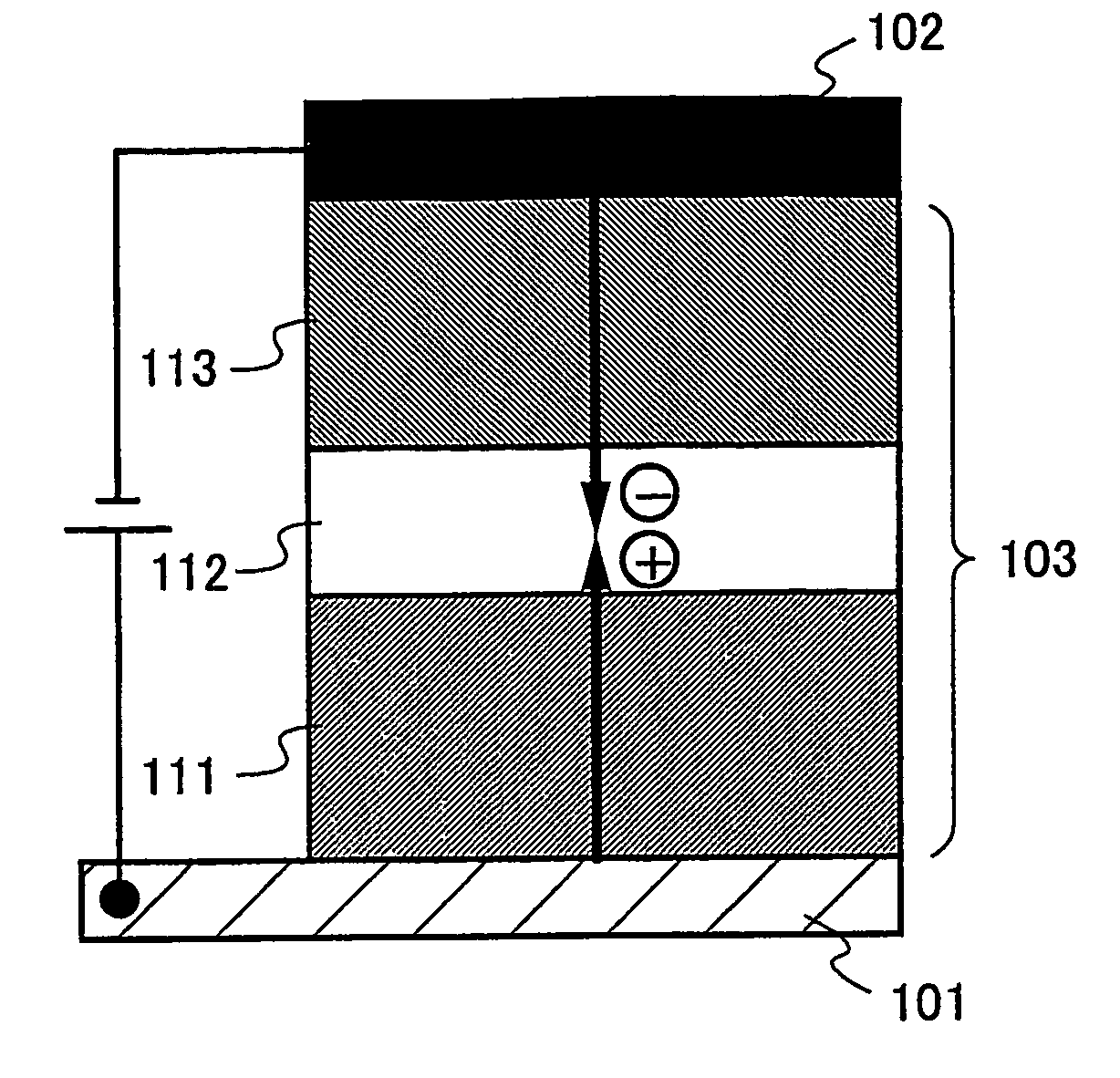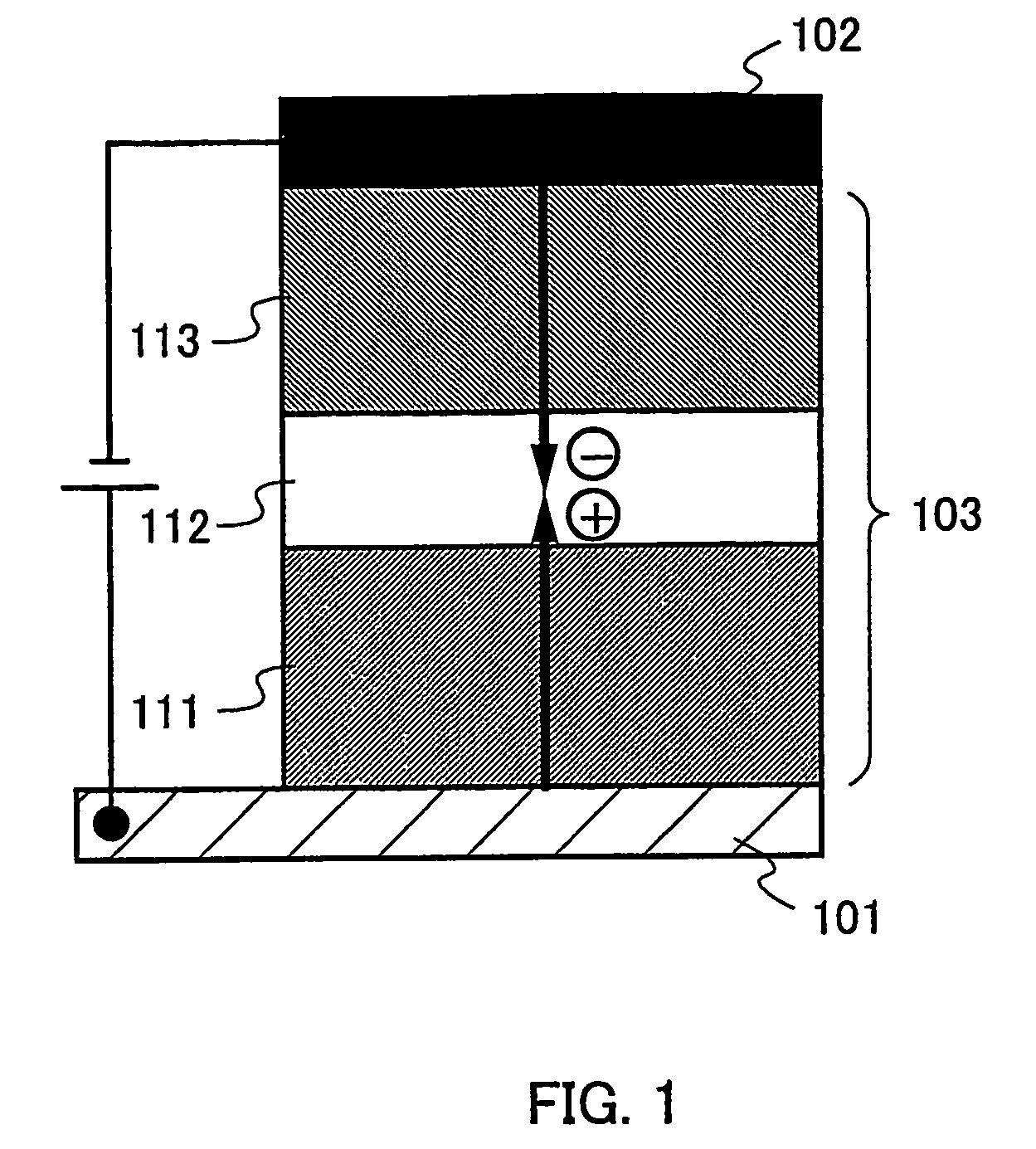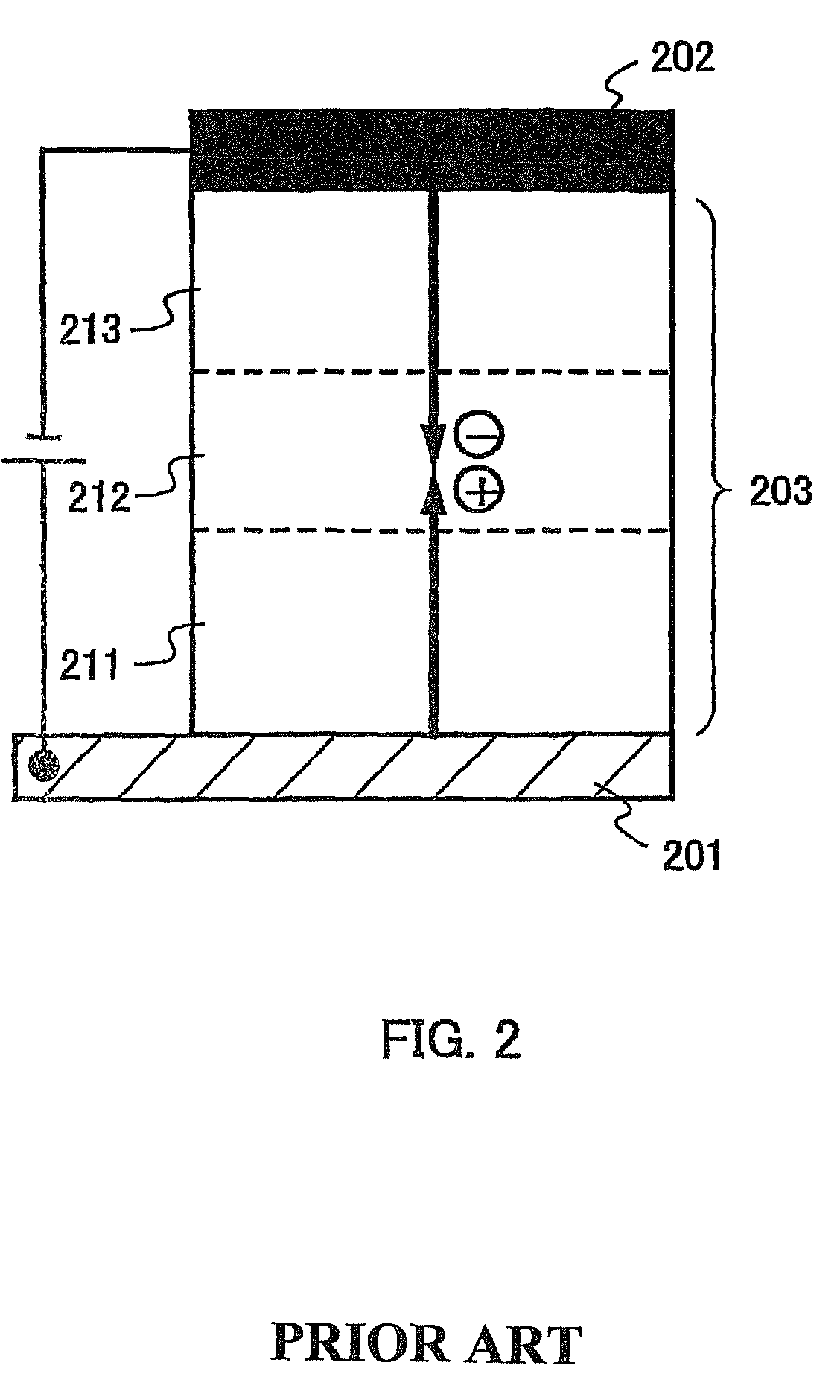Light-emitting-element
a technology of light-emitting elements and elements, which is applied in the direction of discharge tubes/lamp details, discharge tubes luminescnet screens, electric discharge lamps, etc., can solve the problems of hard current flow, high voltage needed to apply current, and high voltage for obtaining luminance (that is, driving voltage) to achieve the effect of reducing driving voltage and preventing short circui
- Summary
- Abstract
- Description
- Claims
- Application Information
AI Technical Summary
Benefits of technology
Problems solved by technology
Method used
Image
Examples
embodiment mode 1
[0048]FIG. 1 shows the structure of a light-emitting element according to the present invention, where a composite layer 103 in which an organic compound and an inorganic compound are mixed is sandwiched between a first electrode 101 and a second electrode 102. The structure of the composite layer 103 is completely different from the structure of a composite layer 203 of a conventional light-emitting element (FIG. 2). The composite layer 103 has, as shown in the figure, a first layer 111, and a second layer 112, and a third layer 113, and in particular, the first layer 111 and the third layer 113 have significant features.
[0049]First, the first layer 111 is a layer that takes on the function of transporting holes to the second layer 112, and includes at least a first organic compound and a first inorganic compound that exhibits an electron accepting property to the first organic compound (serves as an electron acceptor). What is important is that the first inorganic compound is not ...
embodiment mode 2
[0072]In Embodiment Mode 2, an embodiment of a CEL element according to the present invention, which is different from Embodiment Mode 1, will be described. FIG. 5 shows the structure of the element. It is to be noted that the reference numerals in FIG. 1 are cited in FIG. 5.
[0073]FIG. 5 shows a light-emitting element sandwiching a composite layer 103 in which an organic compound and an inorganic compound are mixed between a first electrode 101 and a second electrode 102. As shown in the figure, the composite layer 103 includes a first layer 111, a second layer 112, a third layer 113, and a fourth layer 114.
[0074]Since the same structures as the respective layers in Embodiment Mode 1 (that is, FIG. 1) can be applied to the first electrode 101, the second electrode 102, the first layer 111, the second layer 112, and the third layer 113, explanations thereof are omitted. The thing that is different from Embodiment Mode 1 is that the fourth layer 114 is provided between the third layer...
embodiment mode 3
[0083]In the present embodiment mode, a light-emitting device that has a CEL element according to the present invention in a pixel portion will be described with reference to FIGS. 8-(1) and 8-(2). FIG. 8-(1) is a top view showing the light-emitting device and FIG. 8-(2) is a cross-sectional view taken along A-A′ in FIG. 8-(2). Reference numeral 801 indicated by a dotted line denotes a source-side driver circuit, reference numeral 802 denotes a pixel portion, and reference numeral 803 denotes a gate-side driver circuit. In addition, reference numerals 804 and 805 denote a sealing substrate and a sealing material, respectively. A region 806 surrounded by the sealing material 805 may be a space filled with an inert gas or may be filled with a solid such as a resin.
[0084]A connecting wiring 807 for transmitting signals to be input to the source-side driver circuit 801 and the gate side driver circuit 803 receives signals such as a video signal, a clock signal, a start signal, and a res...
PUM
 Login to View More
Login to View More Abstract
Description
Claims
Application Information
 Login to View More
Login to View More - R&D
- Intellectual Property
- Life Sciences
- Materials
- Tech Scout
- Unparalleled Data Quality
- Higher Quality Content
- 60% Fewer Hallucinations
Browse by: Latest US Patents, China's latest patents, Technical Efficacy Thesaurus, Application Domain, Technology Topic, Popular Technical Reports.
© 2025 PatSnap. All rights reserved.Legal|Privacy policy|Modern Slavery Act Transparency Statement|Sitemap|About US| Contact US: help@patsnap.com



